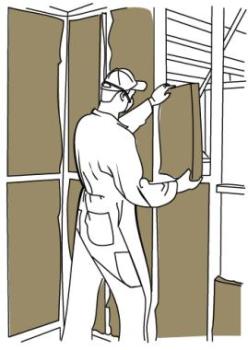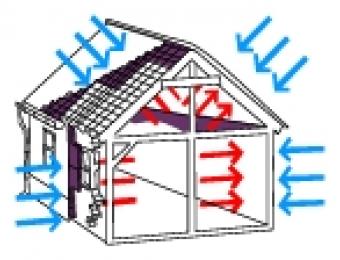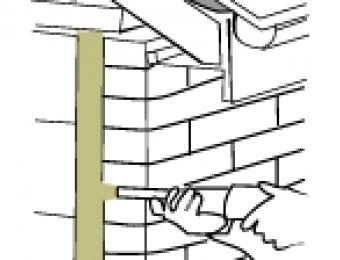
What is rock wool?
Rock wool or mineral wool, is a type of insulation made from rock (such as basalt) or from the slag castoffs from iron ore processing. It is melted and then spun at high speeds through a thin mesh to create strands, similar to the process used to make fairy floss. The final product may also contain a binding agent and oil to reduce dust and keep the insulation in one piece. Rock wool is normally cut into long strips of varying thicknesses and sold as rolls or batts.
How does rock wool insulation work?
The individual fibres of the batt work to partition off air into small pockets, isolating and trapping it. This stops convective heat from rising through it, by preventing the heat from transferring from one air pocket to the next. The more compressed rock wool insulation is, the less effective it becomes as the air pockets are crushed out. The material it's made from does actually conduct heat reasonably well, so it's vital for this sort of insulation to remain uncompressed.
How effective is rock wool insulation?
The R-value of rock wool batts, as with glasswool batts, is typically given as an overall R-value for the particular batt or product in question. Rock wool batts are effective at preventing heat transfer on their own, but doubling up on batts will give approximately double the R-value, so in some cases it might even be economical to find a good discount on a lower rated batt and buy twice as much.
How much soundproofing does rock wool insulation provide?
Rock wool batts will help to reduce the transmission of sound (especially between walls), but their lower density allows for more sound to travel through than other heavier forms of insulation. The Rw value for rock wool batts generally range from 25-40, so if total soundproofing is important, you will need to look for another insulation method that's specifically designed for the task.
How is rock wool supplied and installed?
Mineral wool insulation is supplied in large rolls or in batts which can be cut to whatever size is required. Installation is similar to glass wool batts – the insulation is cut to size and pressed into place between joists or wall studs, using its natural elasticity to hold it in place and prevent movement. Wearing a dust mask and gloves when installing is essential, as the dust fibres from batts can be harmful to your lungs, and touching them can cause skin irritations.
How much does rock wool insulation cost?
Rock wool insulation batts are reasonably cheap in comparison to many other forms of insulation. The cost of professional installation is normally quite affordable, and worth it to ensure a professional result.
Special considerations
These and glass wool batts make up the majority of insulation choices for most Australian homes. They are easy to put in and remove, cheap to replace and are unappealing to rodents and insects. These types of insulation can be vulnerable to mould build-up if water and condensation are allowed to get into the fibres though.





